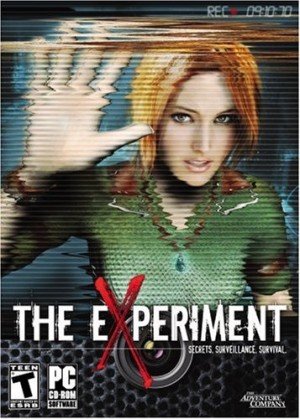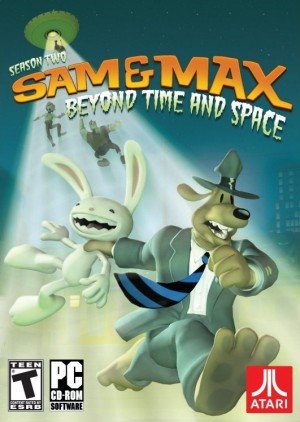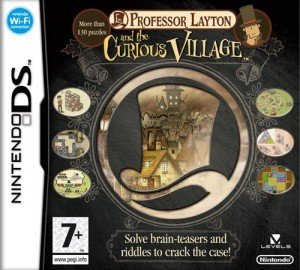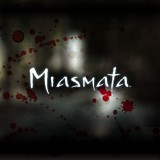Review for Girl with a Heart of
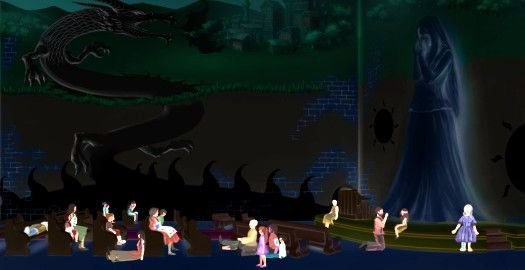
Light and Dark are two opposites that appear ever at odds with one another. In Girl with a Heart of, this conflict is literal, with people loyal to either side fighting an eternal war with weapons and magic consisting of pure light and darkness. Caught up in the battle is the Dark city of Underfoot, under heavy siege from the forces of Light, and this unique interactive narrative tells the tale of that attack and the audacious plan to defeat it. Its interesting premise, unusual control scheme and fine art style provide an attractive setup, but the promise of a player-directed narrative proves largely unfulfilled, with a narrow range of actions available and a main plot that steamrolls on regardless of your input.
The heroine of this tale is 11 year old Raven, a girl born without a heart. To save her life, an artificial heart was created and magically inserted into her at birth. But the heart has more uses than simply keeping young Raven alive, its creator having foreseen a time when the city would be under threat. The heart is a perfect receptacle for the dark force used to power the city’s magic. What’s more, when Raven feels strong emotions, their essence can be imbued into crystals and added to the heart. It is this ability that gives the game its odd title – the heart starting off empty and slowly filling with the emotions collected over time. As Underfoot faces destruction, the heart’s creator tutors Raven in its use, with the intention of making her formidable enough to drive back the forces of Light.
The most obvious difference from traditional adventure games is the side-scrolling nature of the environments. Control is predominantly handled through keyboard, with either A and D or the arrow keys used for movement and the space bar for interaction, though the mouse can optionally be used to navigate dialogue options. As you move Raven about, interaction is only possible when an on-screen prompt indicates an available action close to her. These are extremely limited, almost entirely restricted to conversing with a handful of individuals and performing a few actions. What makes this lack of interaction even more glaring is that some are only available once the story requires them. Your only access to the flower seller outside the temple is to buy a single bunch of flowers, and you are unable to use the always-open graveyard gate until a sub-plot requires you to do so. This lack of rewarding exploration serves to severely undermine the artistic and descriptive detail given to the setting, as full immersion is badly hampered by your inability to connect with it.
The impressive hand-painted graphics are done a pastel style that highlights the underground nature of the city. The adobe-style buildings are backed by the rough stone walls of the caverns they’re situated in. In the abandoned lower levels, nature has started to reclaim the caves, with many buildings having fallen into ruin. There are also some magnificent pieces of art on display, such as a dragon mural on the wall of the temple and an imposing warrior statue in the graveyard. Some scenes include ambient animation, such as a pulsing fire in the smithy. In populated areas, an effort has been made to show a living city, with a random selection of individuals passing you in the streets. Whilst some citizens, including Raven, have pink skin, many have a purple tone, presumably an indication of their long association with the power of the dark. When engaged in conversation, a static close-up of the other character appears on-screen, their expression changing from dialogue to dialogue to represent their feelings at the time, such as sadness at a loss or shock at your previous response. The only real visual let-down is the walking animations, which appear slightly out of sync with the actual movement, giving an unnerving impression of characters sliding about.
There is a lot of detail invested in the setting itself, imparted both through conversation and consulting the library at the temple. You will find out about the society of the Dark people, subjects of the Dark King, and the conflicts between other opposing forces, such as Order and Chaos, that sweep the world. The background is nicely conceived, with a lot of consideration clearly having gone into how a society forced to live entirely underground would operate. You will also learn about the history of characters such as John Blackbeard, the heart’s creator, who has an extensive military history. The supporting cast are reasonably well rounded, with personalities that make them more than merely sounding boards for the protagonist. John’s aim in saving the town is undoubtedly noble, but some of his actions to that effect are decidedly questionable. Meanwhile, Cynthia Cloudy, host to Raven while her mother is in hospital, is a person of changeable moods, making conversations with her fascinatingly unpredictable affairs.
Whilst the wealth of detail makes for a rich and interesting backdrop, too much of it results only from Raven questioning individuals about themselves or others. This not only comes across as slightly clumsy, it also severely affects the replay factor. There are reams of repeated dialogue you’ll need to skip through in order to progress a second time around, and whilst the ability to bypass dialogue is normally welcome, here it is all too easy to inadvertently skip past a one-time only option that would actually take the conversation in a different direction. This leaves the unhappy choice between taking the entire dialogue at a slow pace or risk missing the variants that are the main point of replaying.
Sometimes playing in the background, the music is pleasant and appropriate to the respective scenes. A melancholy piano piece plays in the temple pressed into service as a hospital for the injured. Elsewhere, the sumptuous manor house of the town’s ruler has an appropriately dramatic tone. Whilst these pieces add to the atmosphere of your current location, they do not loop, resulting in the game falling silent if you spend any length of time in a particular place. Given how extensive the dialogues are, this is the norm rather than the exception, resulting in astonishing revelations and actions often occurring with no accompaniment, somewhat diminishing the dramatic effect. Decent voice acting would have gone some way to filling in the gaps, but unfortunately (if understandably) the game is entirely unvoiced.
One of the big selling points of Girl with a Heart of is facing difficult choices that affect the story and the characters. Having played through the game three full times, I feel inclined to say that this has only been achieved to a limited extent. Unlike most adventures, there is no option to exhaust all dialogue choices, as many selections close off other lines of enquiry. In some cases this can influence relationships both between you and other characters and sometimes theirs with others. There are also some points where your actions – or lack thereof – will have a more profound effect on someone else, such as your badly injured mother. Your choices in these situations help to shape the emotions Raven feels, affecting the development of her heart. With such detailed characterisation, these major events are handled in a way that can have a significant emotional impact.
However, the suggested freedom is not as substantial as it first appears. In my first playthrough I was kind and helpful at every opportunity. This appears to be the approach the story was primarily written for. My kindness generated responses from others that made me feel more invested in their fates, enhancing the impact when characters are put in danger. In my initial replay, I tried to adopt the opposite persona and found the game much less willing to accept my choices. Despite my attempts to refuse them, I was forced to take on no less than three separate fetch quests. Only one of these, where the ruler of the town turned his request into an order, was there a reason for this. On both other occasions, taking on the quests was completely at odds with the persona I was cultivating. What’s worse is that both were related to a sub-plot that was tangential at best.
Overall, the main storyline was unchanged by my different actions throughout, its multiple endings apparently solely dependent on a few choices made in the end-game scenario. As the game has an autosave with no manual option, this means one simple selection error near the end means having to play through a largely unchanged story to see the result of the intended action. I made just such an error the first time around, resulting in a single-paragraph bad ending that was so abrupt it took several moments for me to realise that the game was over. My second playthrough took me past this point, but the ending was similarly sudden and downbeat. Given the effort put into the rest of the game’s text, dismissing at least two of the endings in a few lines feels like scant reward for the player’s efforts.
There is one way your choices do have a major effect on the gameplay. Dependent on your actions, different emotions are emphasised for adding to your heart. The main function of these different emotions is to boost the role-playing elements built into the game. Every time you sleep, you gain points which can be spent on skills. Initially you only have two abilities, Insight and Lying, but you later gain Imbuing and Magic skills. The first two are mostly adventure-oriented, offering new dialogue options, but no guidance is ever given as to how much is needed to create new options. The Imbuing skill determines your effectiveness at adding emotions to crystals, a higher skill providing greater bonuses like a stronger shield or more effective attack. The Magic skill determines the quality of your spells, which are all combat-oriented.
At various points in the game you will need to defeat enemies, with most crystals augmenting your spells. The fights happen in real-time, but the only spells you have available initially are a shield and an auto-targeting attack. Both are activated by a single key-press, though holding the attack button builds power as well, so the fights largely consist of simple repeated button-pressing. You later acquire a spell to jump past an enemy for surprise attacks, but this never seemed to confuse them for a moment and so seemed largely unnecessary. These fights are extremely difficult to lose, as I won easily even with the absolute minimum in the latter two skills. On one occasion I lost on purpose, and was immediately given the option to begin the fight again. Had the fights required some skill, either with clever tactics or agile fingers, then they could have proved a worthwhile addition. As it is, they feel more like an unwelcome interruption to the story, making the crystal-enabling element less interesting by association.
What may also be less satisfying for adventure gamers is the distinct lack of puzzle challenges. There is one dialogue puzzle and a final challenge that involves working out how to use the final crystal obtained to save the city. John also gives you a test prior to commencing your training, though trial and error will suffice to solve that. Otherwise, the focus is less on obstacles to your progress and more about the path you choose to travel. However, in a way the game itself is a series of dialogue puzzles in which the object is to unlock as much of the story as possible, and there are a number of optional sub-plots that offer a more human side to the grand conflict, which provides even more depth to the tale.
Affordably priced at the developer's website, Girl with a Heart of proves largely successful with the narrative part of its “interactive narrative” description. A rich world has been constructed, its subterranean locations pleasing to the eye and filled with a handful of detailed characters. This makes the comparatively small play area feel like part of a much larger whole. The interactive side of the equation has not fared so well, unfortunately, with limited interactivity available and role-playing game elements that feel largely extraneous. For those wishing to concentrate solely on a story you have some influence over, the experience may prove worthwhile during the few hours it takes to complete the first time through (with diminishing returns on each replay). For those seeking a playable challenge to go with the tale, however, there isn’t a whole lot here to get your blood pumping.









